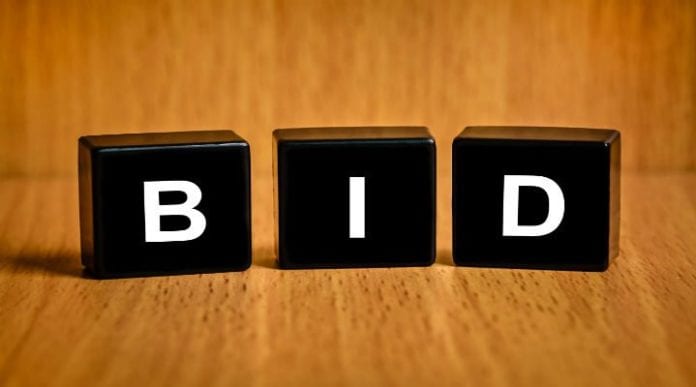The 3.45 GHz auction action has jumped in the past few days, sending the total value of bids thus far past the $10.5 billion mark after 34 rounds.
Last Thursday, the auction had only raised around $3 billion after 19 rounds. On Friday, the number of daily rounds shifted to five and the bidding moved to a more rapid clip that has more than tripled the auction total and is getting closer to meeting the reserve price of $14.7 billion.
Demand has stepped up in recent rounds as well. Of the available license types or “products,” 191 now have greater demand than supply, compared 155 license types after round 19; 115 have a greater supply of available licenses than the existing demand, compared to 134 after round 19; and 175 had demand equal to supply, down from 192, according to the FCC’s auction round information. The auction’s clock round will continue, with prices increasing every round, until demand is equal to or less than the available license types.
The 3.45 GHz auction, also known as Auction 110, offers up 100 megahertz of prized midband spectrum, divided into ten 10-megahertz blocks, licensed by geographic areas known as Partial Economic Areas (PEAs), for a total of 4,060 flexible-use licenses across the contiguous United States. Sasha Javid, COO at Bitpath and former chief data officer and legal advisor on the FCC’s Incentive Auction Task Force, is once again providing auction tracking that can be found here.
There are some caveats that come along with the use of the 3.45 GHz band. The FCC has placed limitations on how much of it that any single bidder can accumulate: Bidders can’t hold more than four out of the 10 available licenses in a given PEA, or 40 megahertz of spectrum. In addition, there are nearly three dozen areas around the country where licenses winners will have to coordinate their use of the band with existing incumbent military systems; those areas include military training facilities, Navy home ports, shipyards and military test sites across the Western U.S., the Midwest and up the East Coast. The Department of Defense has been using the 3.45 GHz band for high- and low-powered radar systems, including fixed, mobile, shipborne and airborne systems, as well as testing and training related to those systems. For a deeper dive on the coordination locations, check out Javid’s auction tracking page.
There are 33 qualified bidders participating in the 3.45 GHz auction. All three national cellular network operators are participating, as well as Dish Network (reportedly bidding under the name Weminuche LLC), US Cellular and a number of small and regional network operators. Telecom-focused private equity company Grain Management, which bid $1.277 billion for 10 C-Band licenses and was the fifth-highest bidder overall, is participating as NewLevel III.
The FCC has noted that the 3.45 GHz band, plus the neighboring 3.5 GHz CBRS band and the 3.7 GHz C Band spectrum, represent 530 megahertz of contiguous midband spectrum for 5G. Acting FCC Chairwoman Jessica Rosenworcel has said that the build-out requirements for 3.45 GHz are the “most aggressive build-out obligations of any spectrum auctioned for 5G to date. … We insist on getting infrastructure built twice as fast as what the agency has required in other recent 5G bands.”
Those build-out benchmarks include providing service to at least 45% of the population in areas where bidders win licenses within four years, and at least 80% of the population within eight years for mobile or point-to-multipoint services. If the licenses are used for IoT services, winners have to build out to 35% of the geographic area won within four years and 65% of the geographic area within eight years.
Looking for more insights on midband spectrum? Download RCR Wireless News’ recent editorial report, Minding the Midband, and check out the accompanying webinar featuring experts from Aurora Insight, Analog Devices and LitePoint.

